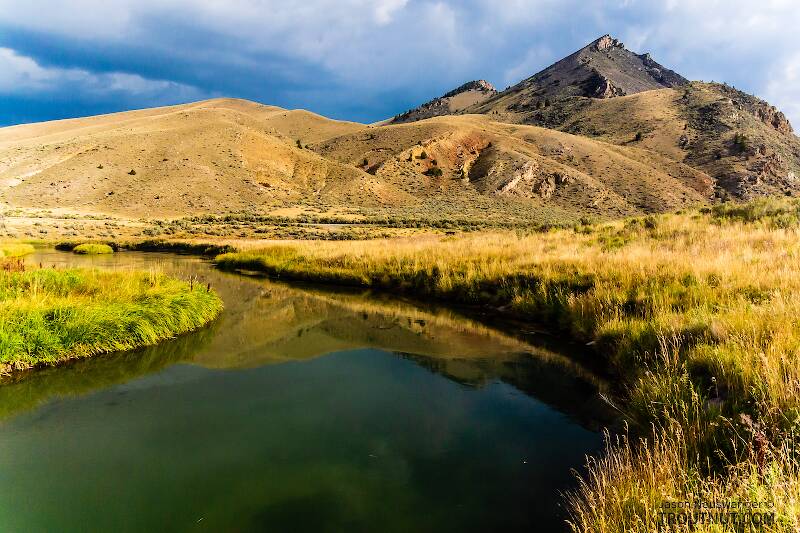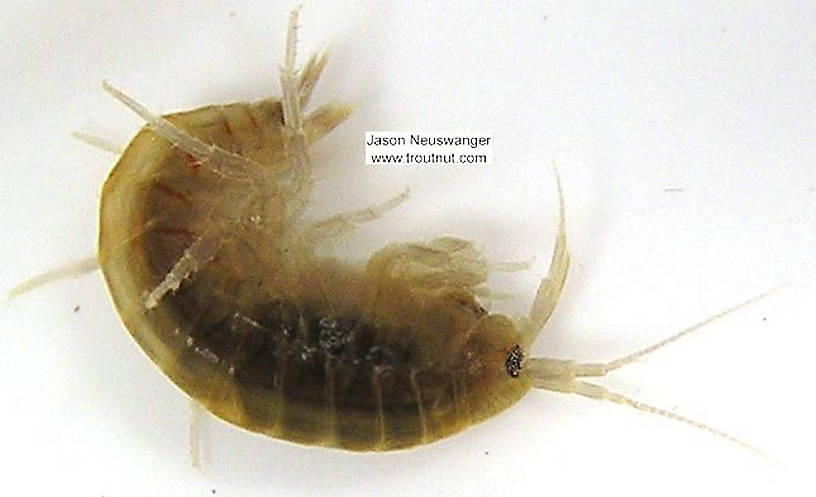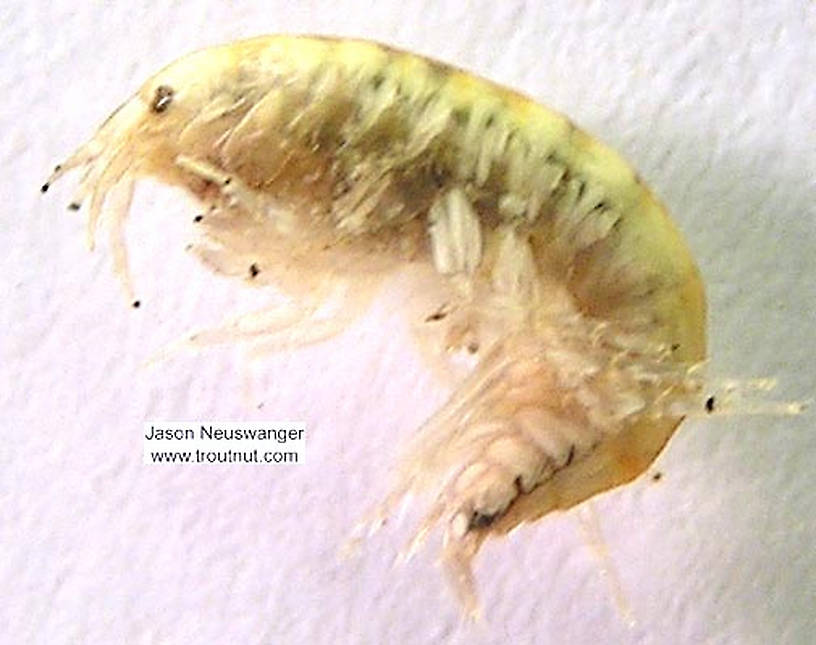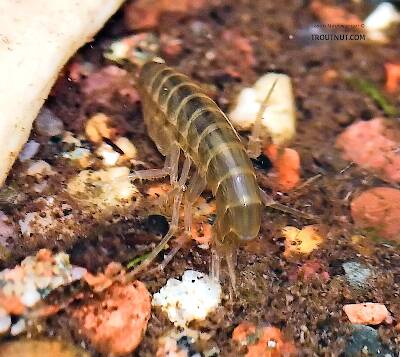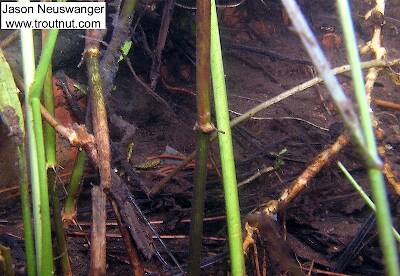
Salmonflies
Pteronarcys californica
The giant Salmonflies of the Western mountains are legendary for their proclivity to elicit consistent dry-fly action and ferocious strikes.
Featured on the forum

This species was fairly abundant in a February sample of the upper Yakima.

Troutnut is a project started in 2003 by salmonid ecologist Jason "Troutnut" Neuswanger to help anglers and
fly tyers unabashedly embrace the entomological side of the sport. Learn more about Troutnut or
support the project for an enhanced experience here.
Arthropod Order Amphipoda (Scuds)
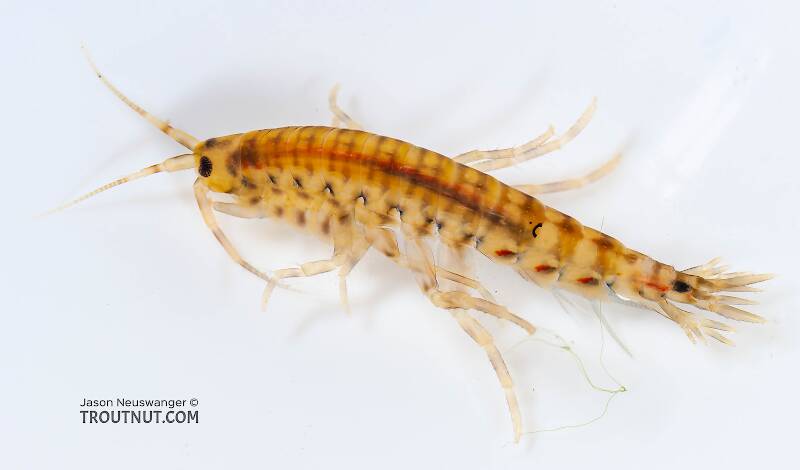
They are crustaceans so they don't go through the same life-cycle complications as aquatic insects. They start out as small scuds, grow to be big scuds, and die. The most significant family to anglers is Gammaridae with the species of the Gammarus genus heading up the list. The smaller Hyalella species of the Talitridae can also be important.
Though they all share the same silhouette, they can come in a surprising variety of sizes and colors. They run from size 8 to as small as you wish to imitate. The most common colors are olive or tan, though they can be found with yellow or gray base colors as well. Shading is often illusive to describe with highlights of pink, orange, green and even blue at times. It pays for anglers to notice both size and color differences in the waters they fish.
Where & when
Preferred waters: Best in alkaline water
Scuds are very sensitive to light and prefer to remain deeply hidden during the day. Overcast days and periods of low light are the best times for anglers to use their imitations.
Amphipoda Fly Fishing Tips
Highly imitative flies have proven very successful and many anglers swear by them. Gravid female designs with their flashy segments of bright orange may give them that extra "edge" of attraction at times. Most anglers prefer special scud hooks with exaggerated short and rounded shanks, especially for dead drifting. Traditional hooks still have their place for use with active retrieves.Some respected angling authorities however suggest that fuzzy Hares Ears, Birds Nests, and Zug Bugs are equally effective. They consider specialized scud patterns an unnecessary extravagance taking up precious space in their fly boxes. This is a valid consideration, especially for those anglers that don't regularly fish water where these crustaceans are important. Regardless of fly selection, fishing them in and around weed beds with known populations is often a good choice in low light conditions.
Specimens of Scuds:
4 Adults
1 Streamside Picture of Scuds:
1 Underwater Picture of Scuds:
Discussions of Amphipoda
Pakistani amphipods
Posted by Halabano on Apr 2, 2009
Last reply on Apr 2, 2009 by Halabano
Hi! i m working on Pakistani amphipods. i want to be intouch with scientists & students working on amphipods taxonomy & ecology
Start a Discussion of Amphipoda
References
- Schwiebert, Ernest G. 1955. Matching the Hatch. MacMillan Publishing Company.

